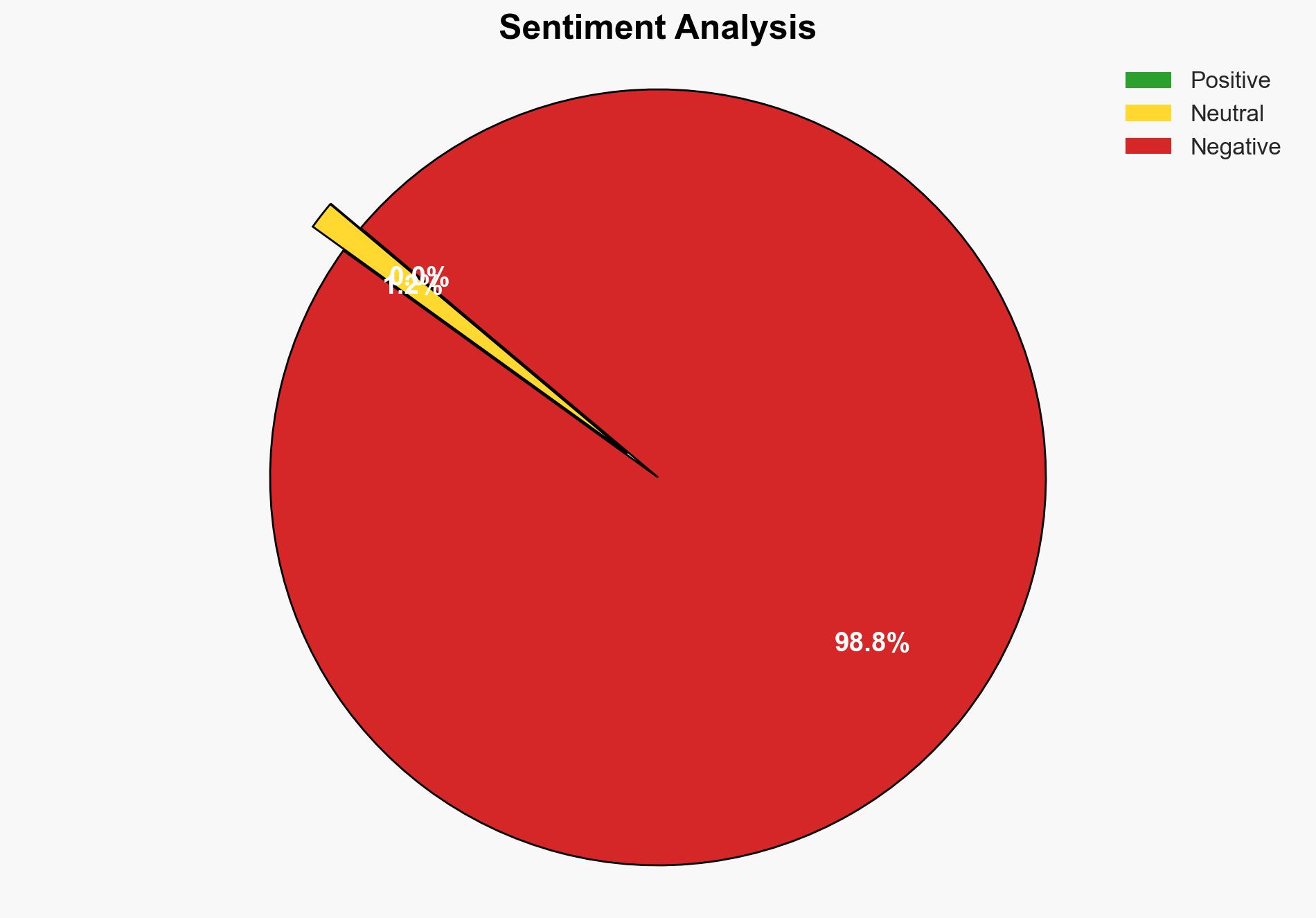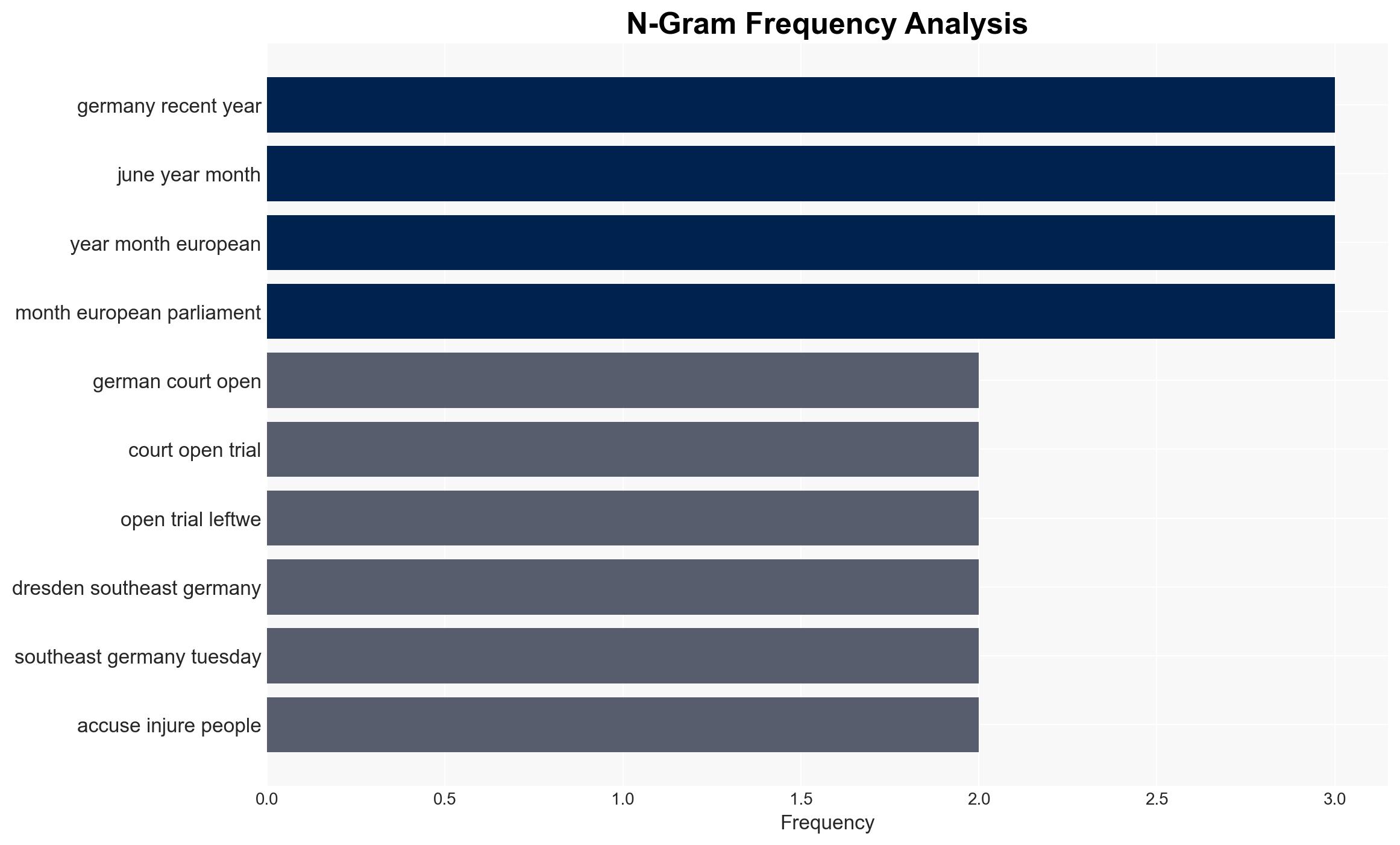German court opens trial against left-wing hammer gang
Published on: 2025-11-25
AI-powered OSINT brief from verified open sources. Automated NLP signal extraction with human verification. See our Methodology and Why WorldWideWatchers.
Intelligence Report:
1. BLUF (Bottom Line Up Front)
The trial of the so-called “hammer gang” in Germany represents a significant legal action against left-wing extremism, potentially setting a precedent for future prosecutions. The most supported hypothesis is that this trial is a strategic move by the German government to address rising political violence and maintain social order. Confidence level: Moderate. Recommended action: Monitor trial outcomes and public reactions to gauge potential shifts in political dynamics and extremist activities.
2. Competing Hypotheses
Hypothesis 1: The trial is a genuine effort by the German judiciary to curb left-wing extremism and political violence, reflecting a balanced approach to extremism across the political spectrum.
Hypothesis 2: The trial is politically motivated, aiming to appease right-wing factions and international partners, particularly in light of recent designations of Antifa-related groups as terrorist organizations by the U.S.
Hypothesis 1 is more likely, given Germany’s historical context of addressing extremism and the legal framework supporting unbiased judicial processes. However, Hypothesis 2 cannot be entirely dismissed due to potential political pressures and international influences.
3. Key Assumptions and Red Flags
Assumptions: The German judiciary operates independently of political influence; the trial will proceed transparently and fairly.
Red Flags: Increased rhetoric from political entities could indicate attempts to sway public opinion or judicial outcomes; lack of transparency or unusual legal maneuvers could suggest political interference.
4. Implications and Strategic Risks
The trial could exacerbate tensions between left-wing and right-wing groups, potentially leading to increased political violence. Internationally, the trial may influence perceptions of Germany’s stance on extremism, affecting diplomatic relations and security cooperation. Cyber and informational threats could arise as extremist groups may seek to manipulate narratives or disrupt proceedings.
5. Recommendations and Outlook
- Enhance monitoring of extremist communications to anticipate potential retaliatory actions.
- Engage in dialogue with community leaders to mitigate polarization and promote social cohesion.
- Best-case scenario: The trial proceeds fairly, reducing political violence and reinforcing judicial integrity.
- Worst-case scenario: The trial becomes a flashpoint for increased extremism and political unrest.
- Most-likely scenario: The trial concludes with mixed reactions, leading to moderate shifts in political dynamics but no significant escalation in violence.
6. Key Individuals and Entities
Lina E: Lead defendant, accused of leading the “hammer gang.”
Maja T: German activist previously extradited from Hungary.
Ilaria Salis: Italian antifascist activist involved in related events.
7. Thematic Tags
Structured Analytic Techniques Applied
- ACH 2.0: Reconstruct likely threat actor intentions via hypothesis testing and structured refutation.
- Indicators Development: Track radicalization signals and propaganda patterns to anticipate operational planning.
- Narrative Pattern Analysis: Analyze spread/adaptation of ideological narratives for recruitment/incitement signals.
Explore more:
Counter-Terrorism Briefs ·
Daily Summary ·
Support us





